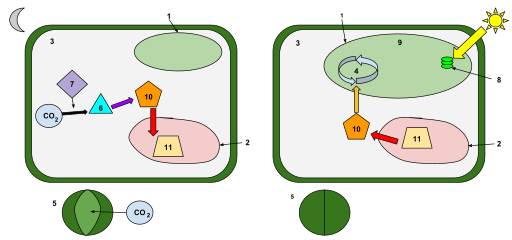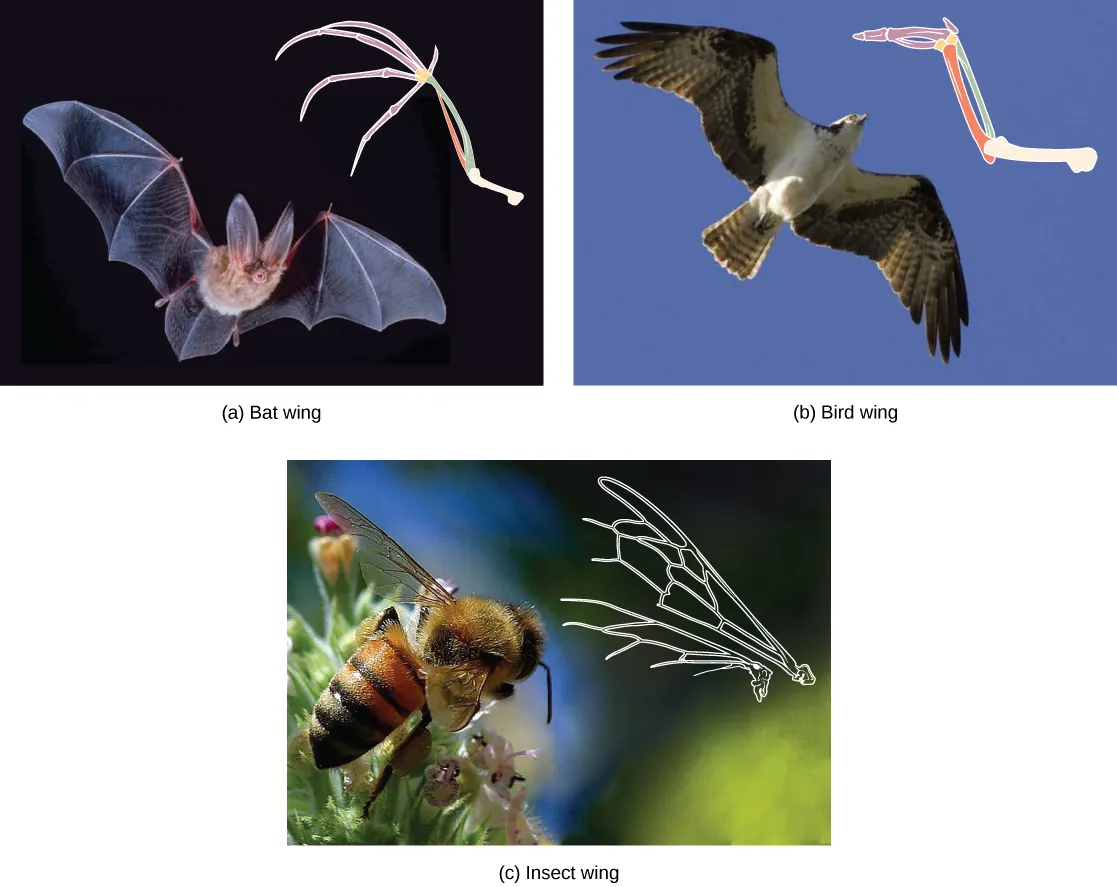OCR Specification focus:
‘Recognise anatomical, physiological and behavioural adaptations, including cases where unrelated groups evolve similar anatomical features.’
Adaptations enable organisms to survive and reproduce in diverse environments. They arise through natural selection, resulting in specialised traits that enhance survival, reproduction, and ecological success.
Understanding Adaptations
An adaptation is a heritable feature that increases an organism’s chance of survival and reproduction in its environment. Adaptations can occur at the anatomical, physiological, or behavioural level. Over time, natural selection favours advantageous traits, shaping species to thrive in specific ecological niches.
Adaptation: A characteristic that improves an organism’s ability to survive and reproduce in its environment.
Adaptations can arise through genetic variation caused by mutation or recombination, and are maintained within populations when they confer a selective advantage. Organisms with beneficial traits are more likely to survive, reproduce, and pass these traits to offspring.
Anatomical Adaptations
Anatomical adaptations (also known as structural adaptations) are physical features of an organism that improve its ability to survive in a particular habitat. These traits are directly observable and often linked to the organism’s role within its ecosystem.
Examples of Anatomical Adaptations
Body shape and structure: Streamlined bodies in fish and dolphins reduce water resistance, enabling efficient movement through aquatic environments.
Insulation: Thick fur and blubber in polar bears minimise heat loss in cold climates.
Camouflage: Cryptic colouration in leaf insects and stick insects helps them blend into their surroundings, avoiding predation.
Specialised limbs: Webbed feet in aquatic birds assist in swimming, while long limbs in desert animals like camels aid in thermoregulation and efficient movement on sand.
Protective structures: Shells of tortoises and spines on cacti provide physical defence against predators or harsh environmental conditions.
Anatomical adaptation: A structural feature of an organism that enhances its survival in its environment.
Anatomical adaptations are particularly important for organisms facing extreme environmental pressures, as they provide permanent, physical means of coping with challenges such as temperature, moisture, or predation.
Physiological Adaptations
Physiological adaptations involve internal body processes that allow an organism to maintain homeostasis and function effectively in its environment. These adaptations often operate at the biochemical or metabolic level and are not immediately visible.
Key Examples of Physiological Adaptations
Thermoregulation: Desert animals like camels can tolerate high body temperatures and produce concentrated urine to conserve water.
Toxin production: Snakes and spiders produce venom to immobilise prey or deter predators.
Photosynthetic efficiency: Plants such as cacti utilise CAM (Crassulacean Acid Metabolism) photosynthesis, opening stomata at night to reduce water loss.

A succinct schematic of CAM photosynthesis: at night, stomata open and CO₂ is fixed and stored as malic acid; by day, stomata close, malate releases CO₂ to the Calvin cycle. This demonstrates how CAM is a water-conserving physiological adaptation to arid conditions. Note: the diagram includes extra biochemical labels beyond the syllabus’ minimum detail but they remain clear and unobtrusive. Source.
Oxygen utilisation: High-altitude animals like llamas possess haemoglobin with a high affinity for oxygen, improving oxygen uptake in low-oxygen environments.
Metabolic dormancy: Some amphibians enter hibernation or aestivation to survive extreme cold or drought.
Physiological adaptation: An internal functional change that enables an organism to maintain homeostasis or perform vital processes in challenging environmental conditions.
These physiological traits are crucial in enabling survival across a range of abiotic stresses, including temperature extremes, salinity, or low oxygen availability.
Behavioural Adaptations
Behavioural adaptations are actions or patterns of activity that improve an organism’s ability to survive and reproduce. They may be innate (genetically determined) or learned through experience and social interaction.
Examples of Behavioural Adaptations
Migration: Birds such as swallows migrate to warmer climates during winter to access food and breeding sites.
Nocturnal behaviour: Desert animals like fennec foxes remain active at night to avoid daytime heat.
Tool use: Some primates use sticks to extract insects, showing learned behaviour that improves foraging efficiency.
Territoriality: Many bird species defend territories to secure resources for breeding.
Social cooperation: Meerkats and wolves exhibit group behaviours such as hunting or vigilance that increase the survival of the group.
Behavioural adaptation: A behavioural trait or pattern that enhances survival and reproductive success within an organism’s environment.
Behavioural adaptations often evolve alongside anatomical and physiological changes, reflecting the interconnected nature of evolutionary pressures.
Convergent Evolution and Analogous Structures
Sometimes, unrelated species evolve similar adaptations independently due to experiencing similar environmental pressures. This process is known as convergent evolution, producing analogous structures—features with similar functions but different evolutionary origins.
Examples of Convergent Evolution
Streamlined bodies in dolphins (mammals) and sharks (fish) enable fast swimming in aquatic habitats.
Wings in bats (mammals) and birds (reptilian descendants) evolved separately but serve the same purpose of flight.

Figure 12.8 compares a bird wing, a bat wing, and a bee wing to illustrate analogous structures produced by convergent evolution. Bird and bat wings are functionally similar but evolved independently; the bee wing is structurally different (chitinous, not bony), highlighting analogy rather than homology. This clean comparison aligns with OCR’s requirement to recognise analogous features in unrelated groups. Source.
Cacti and euphorbias, from different plant families, both developed thick, succulent stems for water storage and spines for protection in arid conditions.
Convergent evolution: The independent evolution of similar traits in unrelated species living in similar environments.
Analogous structures: Features in different species that perform the same function but have evolved separately and do not share a common ancestor.
Convergent evolution highlights the power of natural selection to shape organisms according to environmental demands, rather than shared ancestry.
Interrelationships Among Adaptations
Adaptations often work synergistically rather than in isolation. For instance, the camel combines all three types:
Anatomical: Long eyelashes and closable nostrils prevent sand entry.
Physiological: Can tolerate dehydration and regulate body temperature efficiently.
Behavioural: Rests during the hottest parts of the day to reduce water loss.
This integration of adaptations ensures optimal survival under harsh desert conditions and exemplifies how evolution tailors multiple traits to an ecological niche.
Summary of Adaptation Types
Anatomical adaptations: Structural features aiding physical survival (e.g., camouflage, body insulation).
Physiological adaptations: Internal processes maintaining function (e.g., water conservation, enzyme function).
Behavioural adaptations: Patterns of action promoting success (e.g., migration, nocturnality).
Together, these adaptations demonstrate how natural selection sculpts species to thrive within specific environments, sometimes leading unrelated organisms to evolve remarkably similar solutions.
FAQ
Convergent evolution occurs when unrelated species evolve similar adaptations independently due to similar environmental pressures, producing analogous structures (e.g., wings in bats and birds).
Divergent evolution, in contrast, happens when closely related species evolve different traits because they adapt to different environments, leading to homologous structures (e.g., the forelimbs of mammals adapted for swimming, flying, or running).
Both processes show how adaptation results from natural selection but differ in the relatedness of species and the evolutionary outcome.
Behavioural adaptations often work together with physical and internal changes for maximum efficiency. For example:
A camel’s behavioural adaptation (resting in shade at midday) complements its physiological adaptation (water conservation through concentrated urine).
Arctic foxes combine behavioural adaptations (burrowing) with anatomical features (thick fur) for insulation.
This synergy ensures organisms respond to environmental pressures through multiple, mutually reinforcing strategies.
Adaptations evolve for specific conditions, so when environments shift rapidly, they may become maladaptive.
For example:
Polar bears’ white fur provides camouflage on ice but becomes a liability as ice cover decreases.
Specialised desert plants with reduced leaves may struggle in wetter conditions due to limited photosynthesis.
This demonstrates that adaptations represent a trade-off, offering benefits only under certain ecological circumstances.
Biologists use comparative and experimental evidence to distinguish adaptations from neutral traits:
Comparative studies: If similar traits appear in unrelated species facing the same conditions, it suggests an adaptive function.
Experimental evidence: Traits tested under different conditions (e.g., camouflage effectiveness or metabolic efficiency) can reveal selective advantages.
Genetic analysis: Identifying genes under positive selection supports the idea that a feature is adaptive.
Not all traits are adaptations — some may persist through genetic drift or linkage to other beneficial genes.
Microorganisms also evolve anatomical-like, physiological, and behavioural equivalents:
Physiological: Thermophilic bacteria produce heat-stable enzymes to survive in hot springs.
Anatomical analogue: Some bacteria form protective endospores resembling structural defences in larger organisms.
Behavioural analogue: Bacterial chemotaxis (movement towards nutrients) mirrors animal behavioural adaptations for locating food.
These examples highlight that the principles of adaptation apply universally across all life forms, regardless of size or complexity.
Practice Questions
Question 1 (2 marks)
Explain the difference between an anatomical adaptation and a physiological adaptation, using one example of each.
Mark scheme
1 mark for a clear distinction between the two types of adaptation:
• Anatomical adaptation is a structural/physical feature, while physiological adaptation involves internal processes or functions.1 mark for appropriate examples:
• Example of anatomical: thick fur on a polar bear for insulation.
• Example of physiological: production of venom by a snake to immobilise prey.
Question 2 (5 marks)
Describe how convergent evolution leads to the development of analogous structures. Use examples to illustrate your answer.
Mark scheme
Award up to 5 marks for the following points:
1 mark: Convergent evolution occurs when unrelated species experience similar environmental selection pressures.
1 mark: These pressures lead to the independent evolution of traits with similar functions.
1 mark: The resulting features are called analogous structures — similar in function but different in origin.
1 mark: Example 1 — wings in bats (mammals) and birds (reptilian descendants) evolved separately but both allow flight.
1 mark: Example 2 — streamlined body shapes in dolphins (mammals) and sharks (fish) evolved independently for efficient swimming.

